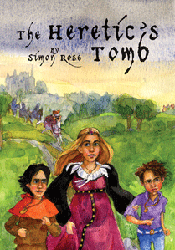Historical Fiction: Part Nine – Description
 The descriptions of characters, locations, and events need to be very vivid in historical fiction. Important historical information that the reader may be unfamiliar with also needs to be well explained. However, don’t be tempted to include too much detail as this will interfere with the flow of the story. You may be an enthusiast about eighteenth century sailing ships, but don’t assume that the reader is similarly fascinated by your descriptions of ropes, masts, and rigging. Just give them enough to create a picture in their mind so that they can visualize the characters in this setting that you’ve created.
The descriptions of characters, locations, and events need to be very vivid in historical fiction. Important historical information that the reader may be unfamiliar with also needs to be well explained. However, don’t be tempted to include too much detail as this will interfere with the flow of the story. You may be an enthusiast about eighteenth century sailing ships, but don’t assume that the reader is similarly fascinated by your descriptions of ropes, masts, and rigging. Just give them enough to create a picture in their mind so that they can visualize the characters in this setting that you’ve created.
In The Alchemist’s Portrait, Matthew travels to several different time periods. While he isn’t in any of these eras for that long, it was still important to set the scene for the reader so that they could visualize in their own mind what the main character was viewing. This could involve describing a character’s appearance and clothing when Matthew appears in Paris in 1792, the type of rifle the villain is carrying in the American Civil War episode, or the surrounding area when Matthew arrives in the middle of St. Petersburg during the Russian Revolution.
In The Sorcerer’s Letterbox and The Heretic’s Tomb, medieval scenes, whether of rural villages or the city of London, needed to be described just enough without making the reader lose interest. Some readers might be familiar with the Tower of London and have visited the location in recent years. However, in The Sorcerer’s Letterbox, the description of how the complex looked in 1483 was very important to the story since important sections of the plot take place there. London Bridge was the only way to cross the Thames for many years during the medieval period. Consequently this was a major feature of the city in the Middle Ages and the bridge is also described in the novel.



